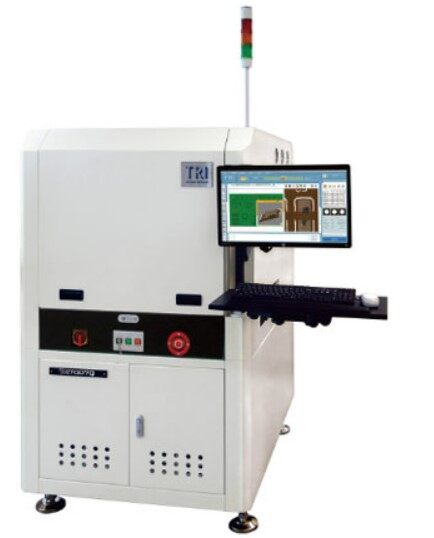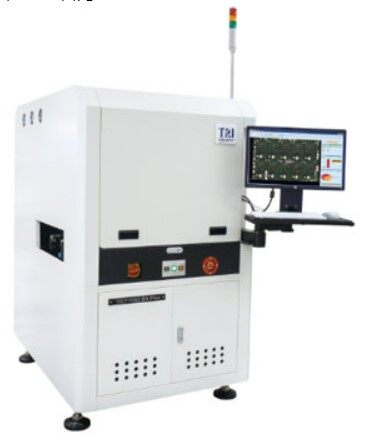Email format error
Email cannot be empty
Email already exists
6-20 characters(letters plus numbers only)
The password is inconsistent
Email format error
Email cannot be empty
Email does not exist
6-20 characters(letters plus numbers only)
The password is inconsistent


In the fast-paced world of electronics manufacturing, ensuring high-quality products is paramount. Quality assurance is crucial for maintaining reliability, minimizing defects, and enhancing overall production efficiency. One of the most advanced tools in achieving these goals is the AOI automated optical inspection machine. This technology has transformed the landscape of electronics manufacturing, providing unparalleled precision and speed in defect detection. In this comprehensive guide, we will delve into the intricacies of AOI machines, their benefits, working principles, and explore leading systems.
What is an AOI Automated Optical Inspection Machine?
An AOI automated optical inspection machine is a specialized device used in the manufacturing process to inspect printed circuit boards (PCBs) for defects. It uses optical methods to capture high-resolution images of PCBs and then analyzes these images using sophisticated algorithms to detect any discrepancies from the intended design.
Key Components of an AOI Machine
1. High-Resolution Cameras: Capture detailed images of the PCBs.
2. Lighting Systems: Ensure that the images are clear and free of shadows, providing uniform illumination.
3. Image Processing Software: Analyzes the captured images to detect defects.
4. Mechanical System: Moves the PCBs under the cameras and lights for a complete inspection.
How Does an AOI Machine Work?
The AOI automated optical inspection machine operates through a series of well-coordinated steps:
1. Image Capture: High-resolution cameras take multiple images of the PCB from different angles.
2. Image Processing: The software compares these images against a pre-defined standard or reference image.
3. Defect Detection: Any variations or anomalies are flagged as potential defects.
4. Classification: Defects are classified based on type and severity, such as missing components, soldering issues, or misalignments.
5. Reporting: Detailed reports are generated, highlighting the defects and their locations.
Benefits of Using AOI Automated Optical Inspection Machines
The integration of AOI machines in electronics manufacturing brings numerous advantages:
1. Enhanced Precision and Accuracy
AOI machines provide exceptional accuracy in detecting even the smallest defects, which might be missed by human inspectors. This precision ensures that only high-quality products proceed to the next stage of production.
2. Increased Speed and Efficiency
By automating the inspection process, AOI machines can inspect PCBs much faster than manual methods. This speed significantly boosts overall production efficiency, allowing manufacturers to meet high-volume demands without compromising on quality.
3. Cost-Effectiveness
Although the initial investment in AOI technology can be substantial, the long-term savings are significant. Reduced labor costs, fewer reworks, and lower defect rates translate to considerable cost savings over time.
4. Consistency and Reliability
Human inspectors can experience fatigue and inconsistency. AOI machines, on the other hand, provide consistent and reliable inspections, ensuring uniform quality across all products.
5. Detailed Documentation and Traceability
AOI systems generate comprehensive reports and maintain detailed records of all inspections. This documentation is invaluable for traceability, quality control, and continuous improvement processes.
Types of Defects Detected by AOI Machines
AOI automated optical inspection machines are capable of identifying a wide range of defects, including:
1. Component Presence and Position
- Missing Components: Identifies if any components are absent from their designated positions.
- Misplaced Components: Detects components that are incorrectly positioned.
2. Solder Joint Quality
- Cold Solder Joints: Spots insufficiently heated solder joints that may lead to unreliable connections.
- Solder Bridges: Identifies unintended solder connections between adjacent leads or pads.
3. Component Orientation
- Incorrect Orientation: Ensures that polarized components, such as diodes and capacitors, are correctly oriented.
4. Surface Defects
- Scratches and Marks: Detects any surface damage that could affect the functionality of the PCB.
5. Dimensional Accuracy
- Component Size and Shape: Verifies that components meet the specified dimensions and shapes.
Leading AOI Systems: A Focus on TRI AOI Systems
Among the various AOI systems available, TRI AOI systems stand out for their advanced technology and reliability. Test Research, Inc. (TRI) is a leading provider of AOI solutions, offering a range of systems tailored to different inspection needs.
Features
1. Advanced Image Processing: The systems use state-of-the-art image processing algorithms to deliver highly accurate defect detection.
2. High-Speed Inspection: These systems are designed for high-speed operation, making them ideal for high-volume production environments.
3. Flexibility: The systems can be configured for various inspection tasks, from pre-reflow to post-reflow inspections.
4. User-Friendly Interface: The intuitive software interface allows for easy setup and operation, minimizing the learning curve for operators.
5. Scalability: TRI offers a range of systems that can be scaled to meet the needs of small manufacturers to large-scale production facilities.
Popular TRI AOI Models
- TR7007 SII Plus: Known for its high-speed 3D solder paste inspection (SPI) capabilities.
- TR7700 SIII: A versatile model suitable for both 2D and 3D AOI, offering exceptional accuracy and speed.
- TR7600F3D: Specializes in 3D AOI with full 3D inspection capabilities for comprehensive defect detection.
Implementing AOI Systems in Manufacturing
Integrating an AOI automated optical inspection machine into your manufacturing process involves several key steps:
1. Assessing Your Needs
Identify the specific inspection requirements of your production line. Consider factors such as the types of PCBs you manufacture, production volume, and the types of defects you need to detect.
2. Selecting the Right AOI System
Choose an AOI system that meets your needs. For instance, if you require high-speed inspections with 3D capabilities, a model like the TRI TR7700 SIII might be ideal.
3. Installation and Setup
Work with the AOI system provider to ensure proper installation and setup. This includes calibrating the system, setting up inspection parameters, and training your staff on how to use the equipment.
4. Integration with Existing Systems
Ensure that the AOI system integrates seamlessly with your existing production line and quality control processes. This may involve software integration and workflow adjustments.
5. Continuous Monitoring and Optimization
Regularly monitor the performance of your AOI system and make adjustments as needed. Continuous optimization ensures that the system remains effective and adapts to any changes in your production process.
Future Trends in AOI Technology
The future is promising, with several emerging trends that are set to enhance their capabilities:
1. Artificial Intelligence (AI) and Machine Learning
Integrating AI and machine learning algorithms can improve the accuracy and efficiency of defect detection. These technologies can learn from past inspections, continuously improving their performance over time.
2. Enhanced 3D Capabilities
Advancements in 3D imaging technology will provide even more detailed inspections, allowing for better detection of complex defects and improving overall quality control.
3. Miniaturization and Portability
As electronic devices become smaller, there is a growing demand for compact and portable AOI systems. These smaller systems will be easier to integrate into various stages of the production process.
4. IoT Integration
Integrating AOI systems with the Internet of Things (IoT) will enable real-time data collection and analysis, leading to smarter and more responsive manufacturing processes.
5. Increased Automation
Further automation of the AOI process will reduce the need for human intervention, increasing inspection speed and consistency while lowering labor costs.
Conclusion
The AOI automated optical inspection machine is an indispensable tool in modern electronics manufacturing. It provides unparalleled precision, speed, and reliability in defect detection, ensuring high-quality products and efficient production processes. With advancements in technology and the rise of innovative systems, the future of AOI looks bright, promising even greater enhancements in quality control and manufacturing efficiency.
Whether you are a small-scale manufacturer or a large production facility, integrating an AOI system into your production line can significantly improve your quality assurance processes, reduce defects, and ultimately enhance customer satisfaction. By understanding the benefits, working principles, and future trends of AOI technology, you can make informed decisions and stay ahead in the competitive electronics manufacturing industry.